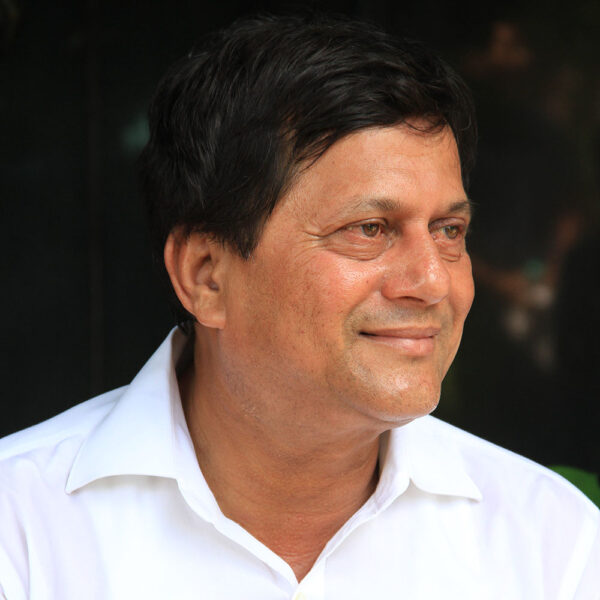Religion & Spirituality are the biggest offerings (or in business terms, ‘biggest tourism products’) by India to the world. Being the birthplace of four of the major religions practised across the world and the cradle for the evolution of Vedanta and Buddha philosophies, India has become the greatest attraction for Religious & Spiritual Tourism within the country as well as across the globe for several thousands of years. Religion in India is the major binding attribute, which, irrespective of the barriers of language, race and culture, has kept alive the concept of India i.e. Unity in Diversity. Religious Tourism is a phenomenon existing in India for several thousand years, from the era of Shravan Kumar taking his blind old parents to Tirath Yatra to Inbound Tourism during the period of Gupta Dynasty and Harshavardhan where Buddhist monks in thousands flock to India in search of Nirvana along with prominent Chinese scholars like Fah-yan and Huien-Tsang despite the unavailability of an organised tourism industry with designated tour operators, proper visa regime, state-of-the-art infrastructure like roads, hotels, and communication systems.
Today too, among Indians, when Religious Tourism comes into the picture, search for luxury and comfort become secondary. It is only the spiritual drive that makes an Indian travel long distances with hardships and limited amenities. So, religion will always remain the biggest feeder for Domestic Tourism, though it is also paramount to provide better amenities because travellers are mostly middle-aged and senior citizens.
But where Inbound Tourism for the religious and spiritual segment is concerned, there is no escape from the development of basic infrastructure – roads, accommodation, security, hotels, food, health & hygiene – along with proper awareness of how to provide better hospitality to foreigners so that people across the value chain can earn well and improve their standard of living.
Every year, thousands of people criss-cross India, looking for spiritual bliss from their beloved God, strengthening the cultural harmony of India. Millions from South India undertake pilgrimage to Badarinath, Kashi, Amarnath, Haridwar & Ayodhya, while an equal number of people from North make visits to Rameshswaram, Madurai, and Tirupati down South. The entire economy of the Dwarka in the West and Puri Jagannath in the East depends solely on the blessings of their presiding deities and millions of visiting devotees.
Religion is a major economy-booster, primarily through Domestic Tourism. Similarly, the entire tourism of Bihar is dependent on the footsteps of Gautam Buddha, particularly Bodh Gaya, which is the Mecca for Buddhists across the world and a major destination for foreign travellers to India.
The potential of Buddhist Inbound Tourism in India is yet to be explored to its optimum level. With the advent of newer Buddhist circuits of Ratnagiri-Lalitgiri-Udayagiri in the Eastern coast of India, Religious & Spiritual Tourism is going to take another leap with its bigger source market in the Far East and South East Asian countries, along with Sri Lanka, where a number of nations are having a visa-on-arrival agreement with India.
Along with Hindu & Buddhist pilgrimage, the entire Sikh diaspora across the world, which is a highly affluent community, visit the Golden Temple in Amritsar generating huge foreign exchange for India. Also, there are prominent places of interest for Muslims and Christians as well, such as the world-renowned sufi dargah of Moinudeen Chisti of Ajmer Sharif in Rajasthan and age-old cathedrals of Goa belonging to 15th century Portuguese era. Thus, India has enough potential for Religious Tourism for every sect and community in the world, and the future of this segment is highly promising.
The immense potential of Spiritual & Religious Tourism cannot be fully realised unless the government and major stakeholders come up with a futuristic tourism policy and vision statement where emphasis is given on infrastructure, awareness, education, and training. The major religious destinations of India are notorious for lack of hygiene and filthiness at temple premises, money-mongering touts and priests, rude mannerisms, lack of basic infrastructure of food, medicine, accommodation, transport, road, etc., along with public apathy towards visitors. Unless religious trusts, which manage the temples along with local government authorities, take proactive measures to create awareness and educate the local businessman, priests, and the public about the need for an image makeover through cleanliness and better hospitality for socio-economic development of society, Inbound Tourism is hardly going to grow. Also, the governments of the respective states and at the Centre must undertake aggressive PR and branding exercise, reaching out to travellers, tour operators, and airline companies to enhance tourist inflow, thereby generating employment for everybody.
The future of Religious & Spiritual Tourism seems quite bright. Apart from organising visit to religious shrines, tour planners must develop products on giving holistic spiritual experience to visitors through yoga and meditation sessions, religious discourses by learned scholars/saints, as well as arranging audio-visual shows in a tranquil environment. Root Tourism can also be added as a feather to religious travelling as a lot of countries like Fiji, Mauritius, Trinidad & Tobago, Indonesia (Bali), Sri Lanka, etc., have a sizable population of people-of-Indian origin who are either Hindu or Buddhist by religion.
Also, a huge population of Hindu and Sikh NRIs in Europe, USA, Canada, and Australia, whose old parents’ or relatives’ stay in India can be a major source for Religious Tourism. In spite of a huge source market, we are lagging because of vision deficiency and lack of professionalism. If we avoid the philosophy of making quick bucks and spend time in developing research-based customised tourism products, market them effectively and deliver high-quality service across the entire value chain, we will not only make better earnings, but also garner respect and goodwill by extending warm hospitality and memorable experiences to our guests.
-Sameer Kumar Das
(An article by Sameer Kumar Das)
( The author Sameer Kumar Das works at KIIT University, Bhubaneswar as Deputy Director, School of Languages)


